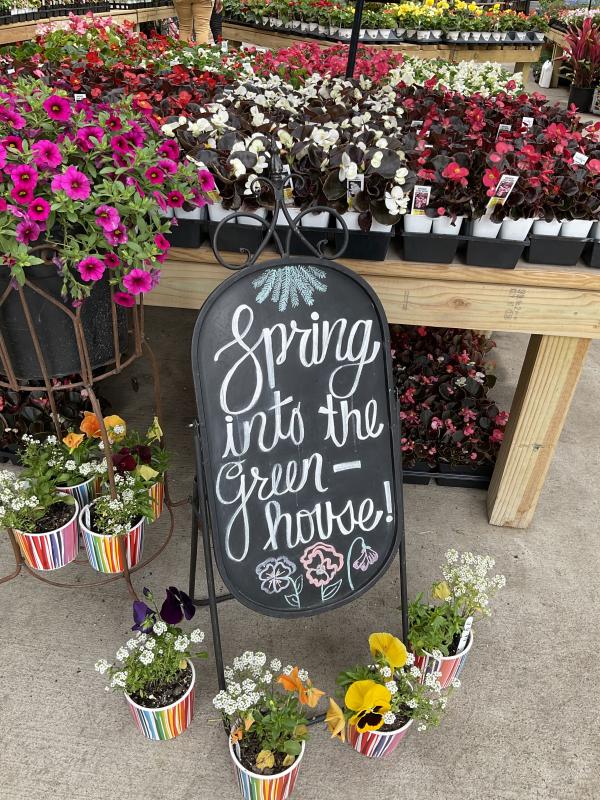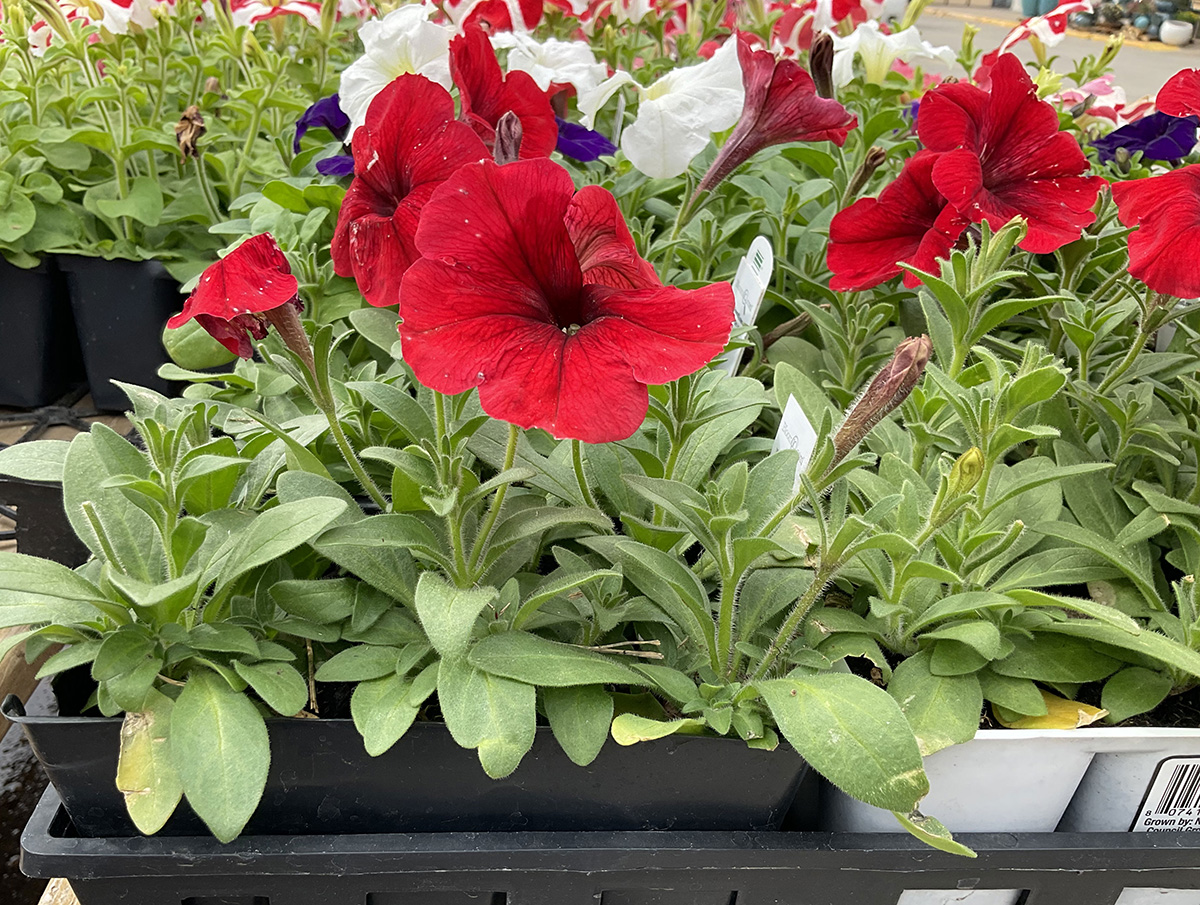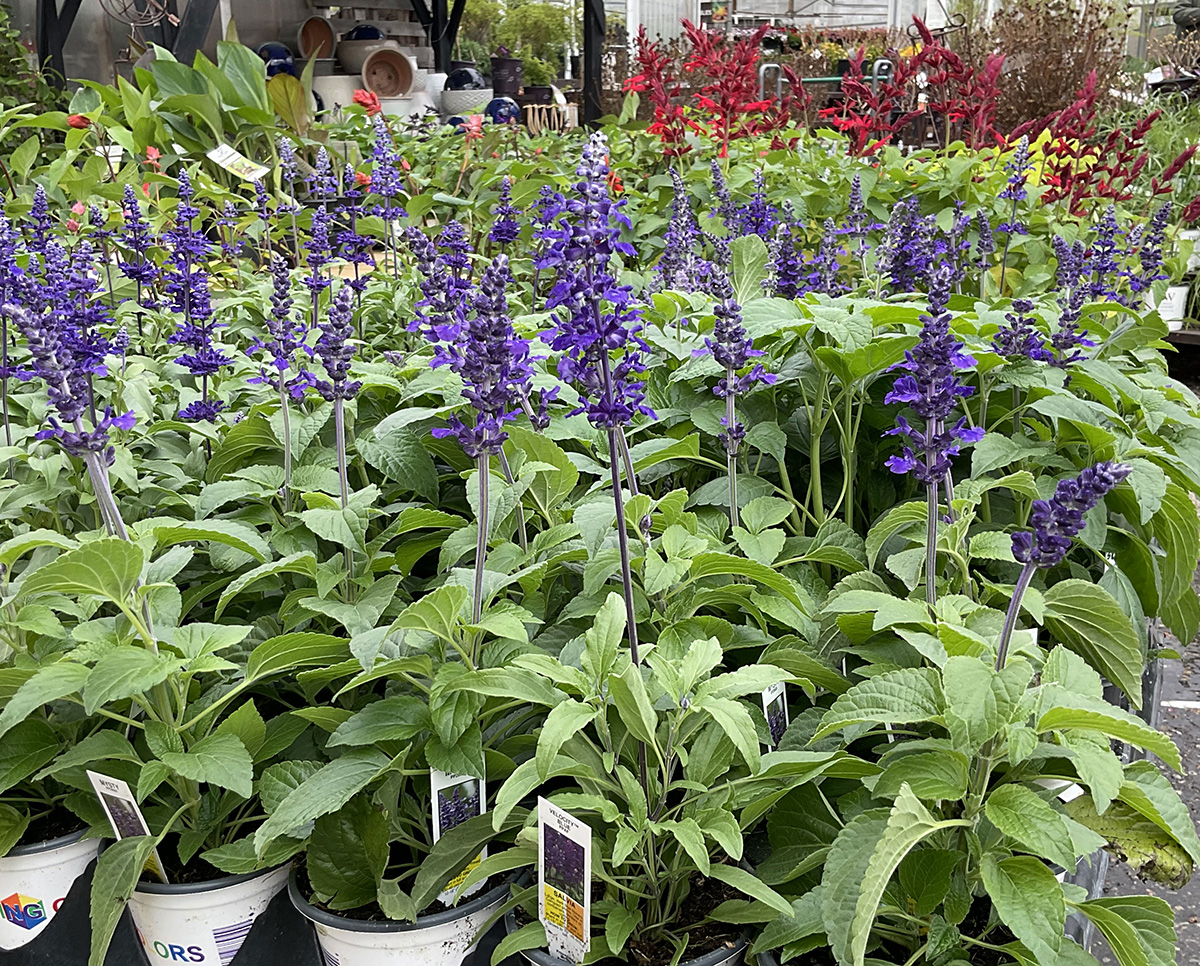
Home gardeners are itching to get outside and will soon be buying bedding plants – both annual flowers and vegetables - from local garden centers and greenhouses. Selecting strong, healthy plants, along with proper care and planting, will help insure a successful start to the gardening season.
 Select Healthy Plant
Select Healthy Plant
Select short, stocky plants with dark green foliage, which indicates the plants have received a good level of nutrients and sunlight. Avoid tall spindly plants, which have stretched to get more sun. Avoid plants with pale green, yellowish or damaged leaves.
Smaller transplants become established in the garden more quickly than larger ones. Quicker establishment enables them to grow and set flower buds faster, ultimately resulting in more productive plants. Larger plants often take longer to recover from transplant stress. For example, short, stocky, six-week-old tomato transplants will produce more fruit than larger tomato transplants that have already started blooming when you purchased them. When selecting bedding plants, bigger is usually not better once the plants get larger than 8-10 inches tall.
Avoid Transplant Shock
Bedding plants purchased from greenhouses or garden centers should not be planted directly into the garden. Suddenly exposing them to intense sun and strong winds often results in leaf damage or plant death. Bedding plants should be "hardened off" or acclimated to outdoor growing conditions before transplanting into the garden.
Start the hardening off process by initially placing the plants outside in a shady, protected site for a few hours at a time. Gradually, over the course of 7-10 days, expose the plants to more sun and wind, and leave them outside for longer periods. Closely watch the plants throughout the hardening off process for signs of wilting, leaf scorch or cold damage.
Potting soil can quickly dry out on warm, sunny days resulting in plants left too dry which wilt and die. Thoroughly water the transplants when the soil surface is dry to the touch.
Bring transplants indoors overnight if there is a possibility of frost. Frost tolerant seedlings, such as cabbage, broccoli, and cauliflower, can remain outdoors. After 7 to 10 days of hardening, the bedding plants should be ready for planting.
 When to Plant
When to Plant
Most annual flowers should be planted outdoors when the danger of frost is past. The average last frost date for Lancaster county is May 10th.
A few frost-tolerant annuals, such as pansy, sweet alyssum, and snapdragon, can be planted one to two weeks earlier. Cabbage, broccoli, and cauliflower transplants can also be planted outdoors in early April. Tomatoes, peppers, cucumbers, melons, and other warm season vegetables should be planted after the average last frost date, unless the gardener plans to provide protection if cold night temps return.
If possible, set the plants into the garden in the evening or on a cloudy day. Planting at these times lessens transplant shock and allows the plants to recover somewhat before being exposed to direct sun.
Many annuals, such as petunia, snapdragon, salvia, and periwinkle, should be pinched back to encourage branching. Others, such as impatiens, are self- branching and don't require pinching. It's also advisable to remove flowers on blooming annuals. Blossom removal aids plant establishment. Vegetable transplants should not be pinched.
Apply a starter fertilizer solution to each plant about one week after transplanting. A starter fertilizer solution can be prepared by mixing 2 tablespoons of an all-purpose garden fertilizer, such as 5-10-5, in one gallon of water. When the fertilizer has completely dissolved, give each plant approximately 1 cup of the starter fertilizer solution.
For more tips on success with bedding plants, check out these resources.
Images by Sarah Browning, Nebraska Extension Educator.
- Select short stocky plants with dark green foliage like this red petunia.
- Pinch the flowers off new transplants immediately after planting. This encourages them to put more energy into root growth and establishment ahead of flower production.